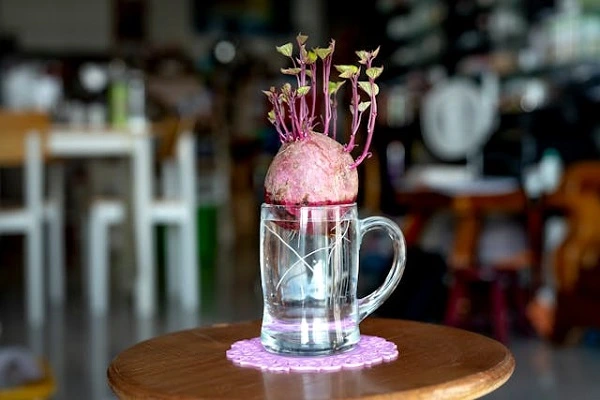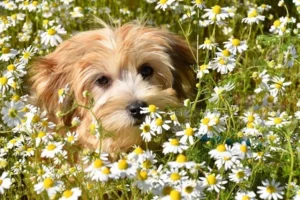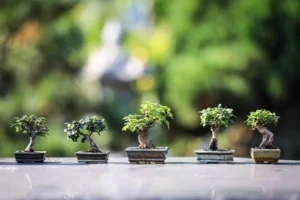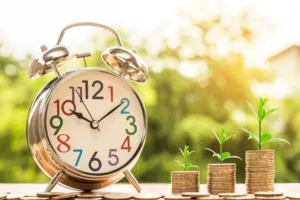So you’ve seen those sleek, green setups online—the ones where people grow leafy herbs or cherry tomatoes indoors using only water and light. It looks impressive, maybe even a little intimidating. But here’s the truth: it’s a lot simpler than it seems.
Urban liquid-based planting might sound high-tech, but at its core, it’s just a smart, mess-free way to nurture plants without dirt. And it’s becoming a favorite for people in small spaces who want to grow their own food—no backyard needed.
Still, if you’re new to the idea, you’re probably bumping into a lot of confusion. Maybe you’ve heard it’s expensive, complicated, or only for science geeks. Maybe you think it needs tons of space or just won’t work without soil.
This article is here to clear things up. We’re breaking down the most common beginner myths about starting your own clean, compact plant setup in the city. No jargon, no pressure—just the facts.
Whether you’re hoping to grow herbs on your windowsill or set up a small edible display near your desk, you might be surprised how doable it really is. Let’s bust some myths and help you take the first step with confidence.
“It’s Too Complicated for Me” – The Complexity Myth
If your first thought is “I’m not a plant person,” you’re not alone. Many beginners worry they need to be a botanist or have a tech background to even get started. The wires, lights, and water pumps can look like science fair leftovers.
But here’s the good news: liquid-based planting is surprisingly beginner-friendly when you start small. You don’t need an advanced setup with timers and tubes to make it work. In fact, some of the most successful starters begin with nothing more than a few jars and a sunny windowsill.
The real secret? You’re allowed to figure things out as you go. Just like learning to cook, the first try might be a little messy—but it’s still worth doing. There’s no rule saying everything has to be perfect from day one.
You also don’t need to memorize plant charts or nutrient cycles right away. Most leafy greens and herbs are forgiving and grow well with basic care. Think of them as the “starter plants” of the water world.
What feels complicated now will quickly become second nature. Once you see your first leaves popping up, you’ll realize—this isn’t rocket science. It’s just water, light, and a little patience.
So don’t let fancy Instagram setups scare you off. Real people—just like you—are making this work in tiny city kitchens and cluttered living rooms. You can, too.
“I Need a Lot of Space” – The Space Myth
One of the biggest misconceptions about liquid-based planting is that it needs lots of room. People imagine shelves packed with gear, grow lights stretching across walls, or entire closets turned into grow zones.
That might be true for advanced setups—but it’s not where beginners start.
This method is actually designed to work in tight living spaces. Unlike traditional planting that spreads outward in wide containers, liquid-based setups work upward. That means you can make the most of narrow corners, tiny countertops, or even a wall hook by the window.
Think small jars lined up on a sunny ledge. Think stackable containers on a kitchen shelf. Some people even use hanging organizers, repurposed shoe racks, or mounted mason jars. No balcony, backyard, or spare room required.
The beauty of starting small is that it keeps things manageable. You’re not tending a jungle—you’re caring for a handful of herbs, a few leafy greens, or maybe some baby strawberries. That’s more than enough to see results and build confidence.
And no, your space doesn’t need to look like a greenhouse exploded. A simple, clean setup can blend into your home and even add a bit of charm. It’s functional and stylish.
This approach isn’t about having more space—it’s about using the space you already have better. Vertical layouts, light-friendly positioning, and compact tools make it possible to farm in a footprint smaller than your coffee table.
If you’ve been holding back because you live small, don’t. This method was practically made for you.
“Plants Won’t Thrive Without Dirt” – The Health Myth
It’s natural to think plants need dirt to survive. After all, we’ve all seen soil-covered roots in gardening tutorials, right? But here’s the kicker: you can grow healthy, thriving plants without any soil at all.
In fact, many plants actually prefer it. Soil can be messy, difficult to maintain, and prone to pests. With liquid-based planting, plants get their nutrients straight from the water, which makes it simpler and more efficient.
When you use water-based systems, the plants get just what they need—no more, no less. The nutrient solution you mix in the water is balanced specifically to give the plants everything they need for healthy growth. It’s like a smoothie of nutrients, designed just for them.
Leafy greens, herbs like basil or mint, and even small fruiting plants like tomatoes can thrive in this system. It’s not a trick, either; it’s science. Water-based planting lets plants focus on what they do best—producing food, not just surviving.
This approach also gives you more control over the plant’s health. Without soil, there’s less chance for harmful pests or fungus. Plus, you can customize the environment to suit your plants’ needs: light, temperature, and, of course, water.
Plants may not need dirt, but they still need care, attention, and the right conditions. And with liquid-based planting, those conditions are far easier to manage. You’re in control—and your plants will thank you for it.
So, next time you think you need dirt for a healthy plant, remember this: it’s the water and the nutrients that matter most, not the soil.
“It’s Super Expensive to Get Started” – The Budget Myth
A lot of beginners assume they need to spend big bucks to get started with liquid-based planting. Fancy kits, high-tech pumps, LED lights— it sounds like something only serious plant enthusiasts can afford, right? But here’s the truth: you can start on a budget, and it doesn’t need to break the bank.
In fact, one of the joys of this method is that it’s very adaptable. While some people do invest in pricier systems, many successful setups are made with materials you already have lying around. Old jars, plastic bottles, even recycled containers like milk cartons can serve as excellent plant homes.
For example, you could set up a simple container system with just a few basic supplies: a plastic container for water, a small pump, some tubing, and maybe a few LED grow lights if you need them. And that’s all you really need to get started with most small-scale setups.
Instead of buying pre-made kits, think DIY. You can often find great materials for little to no cost. Look around your home—how many items could be repurposed to hold plants? Old coffee mugs, yogurt cups, and mason jars are fantastic choices.
Plus, once you’ve got your system in place, maintenance is cheap. The only recurring costs are the nutrients you mix with the water—and that’s a small price to pay for the joy of growing your own herbs or veggies.
Starting small doesn’t mean sacrificing quality. Many beginners start with less expensive, DIY-friendly systems and still produce lush, vibrant plants. It’s all about being creative, resourceful, and having a little fun along the way.
So don’t let the fear of high costs stop you. You can absolutely enjoy the benefits of liquid-based planting without spending a fortune.
“It’ll Make My Place Look Like a Science Lab” – The Aesthetic Myth
When you think of liquid-based planting, you might picture bulky containers with wires, tubes, and pumps everywhere—more like a lab than a cozy home. It can feel like an eyesore, right?
But here’s the truth: it doesn’t have to look that way. One of the best things about liquid-based planting is how easily it can fit into your home’s style. With a little creativity, you can turn it into a stylish addition to your decor, not a cluttered mess.
Start with simple, attractive containers. Mason jars, ceramic pots, or vintage glass bottles can all look great on a shelf or windowsill. These options are both functional and visually pleasing, adding a chic, modern touch to your space.
For a more minimalist approach, choose sleek vertical systems or compact countertop setups. These systems often resemble art pieces, blending seamlessly with your home without standing out. You don’t have to hide them away—let them complement your interior.
Worried about wires or grow lights? Don’t be. Modern LED grow lights are low-profile and designed to blend with your home decor. Some even have adjustable stands so you can position them without disrupting your design.
In short, liquid-based planting can be both practical and beautiful. It doesn’t have to disrupt your style—it can enhance it. So, don’t let the idea of a cluttered setup hold you back. Your plants can be just as gorgeous as they are functional.
“I Don’t Have a Green Thumb” – The Beginner’s Doubt
A common concern for beginners is the fear of not having a green thumb. You might think you’re just not “cut out” for growing plants, or that they’ll wilt the moment you try. But the truth is, liquid-based planting is much easier than traditional gardening—and it’s a great starting point for anyone.
Unlike soil-based methods, liquid-based systems offer a lot more control. You’re providing plants with everything they need—water, nutrients, and light—without the unpredictability of soil conditions. This makes it much easier for beginners to avoid common mistakes and keep plants healthy.
Plus, plants grown in liquid setups tend to thrive more quickly. Because the nutrients are already dissolved in the water, the plants can absorb them directly. This means faster growth, which is incredibly rewarding for someone just starting out.
Many beginner-friendly systems also come with simple guides or instructions that take the guesswork out of things. You don’t need to know complicated formulas or remember when to water. The system does much of the work for you.
So, even if you’ve never grown anything before, liquid-based planting is a fantastic way to build confidence. With the right setup and just a little care, you’ll find that nurturing plants can be easier and more enjoyable than you ever imagined.
The Final Word on Liquid-Based Planting for Beginners
Starting with liquid-based planting might feel intimidating at first, but the myths surrounding it are far more complicated than the reality. The truth is, this method is accessible, simple, and incredibly rewarding—no matter the size of your space or experience level.
By debunking the common misconceptions, you now know that you don’t need a ton of space, a green thumb, or a huge budget to start. All you really need is a little creativity and the willingness to give it a try.
Whether you’re looking to add a bit of greenery to your home, enjoy fresh herbs, or grow vegetables in a compact space, liquid-based planting offers a great solution. It’s a low-maintenance way to bring nature into your life, and it’s easier to set up and maintain than you might think.
Remember, you don’t have to be an expert to succeed with liquid-based planting. You’re simply providing the right environment for your plants to thrive. Start small, learn as you go, and enjoy the journey of watching your plants grow.
So, don’t let myths hold you back. The world of liquid-based planting is waiting—and it’s simpler, more affordable, and more fun than you imagined.




